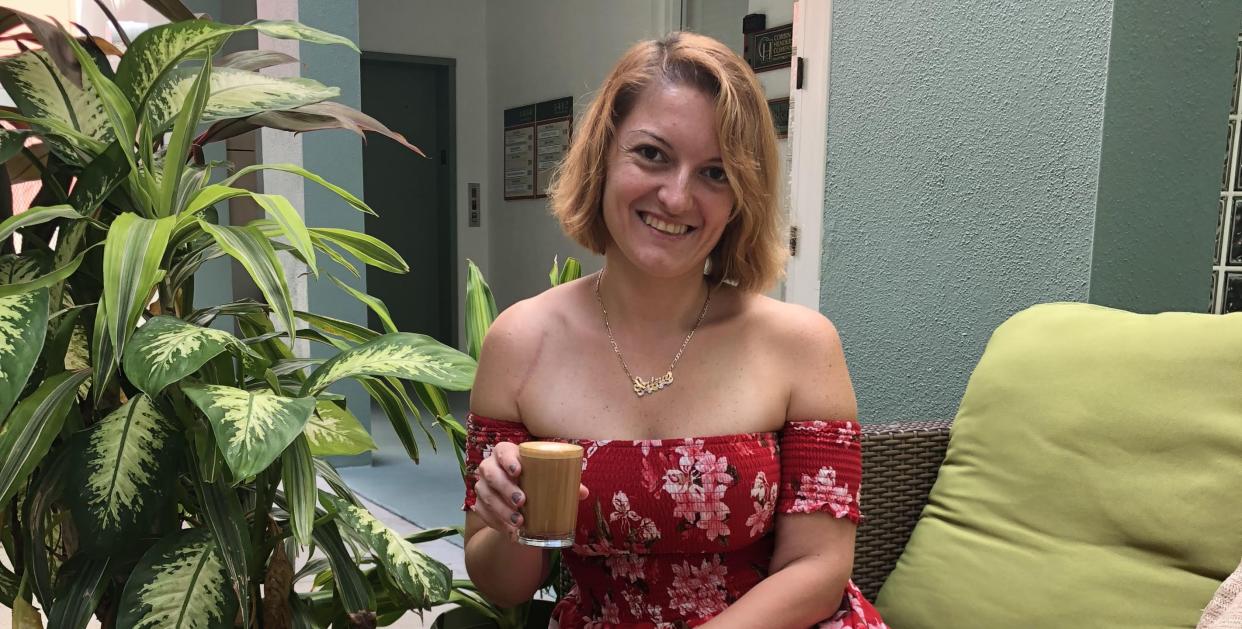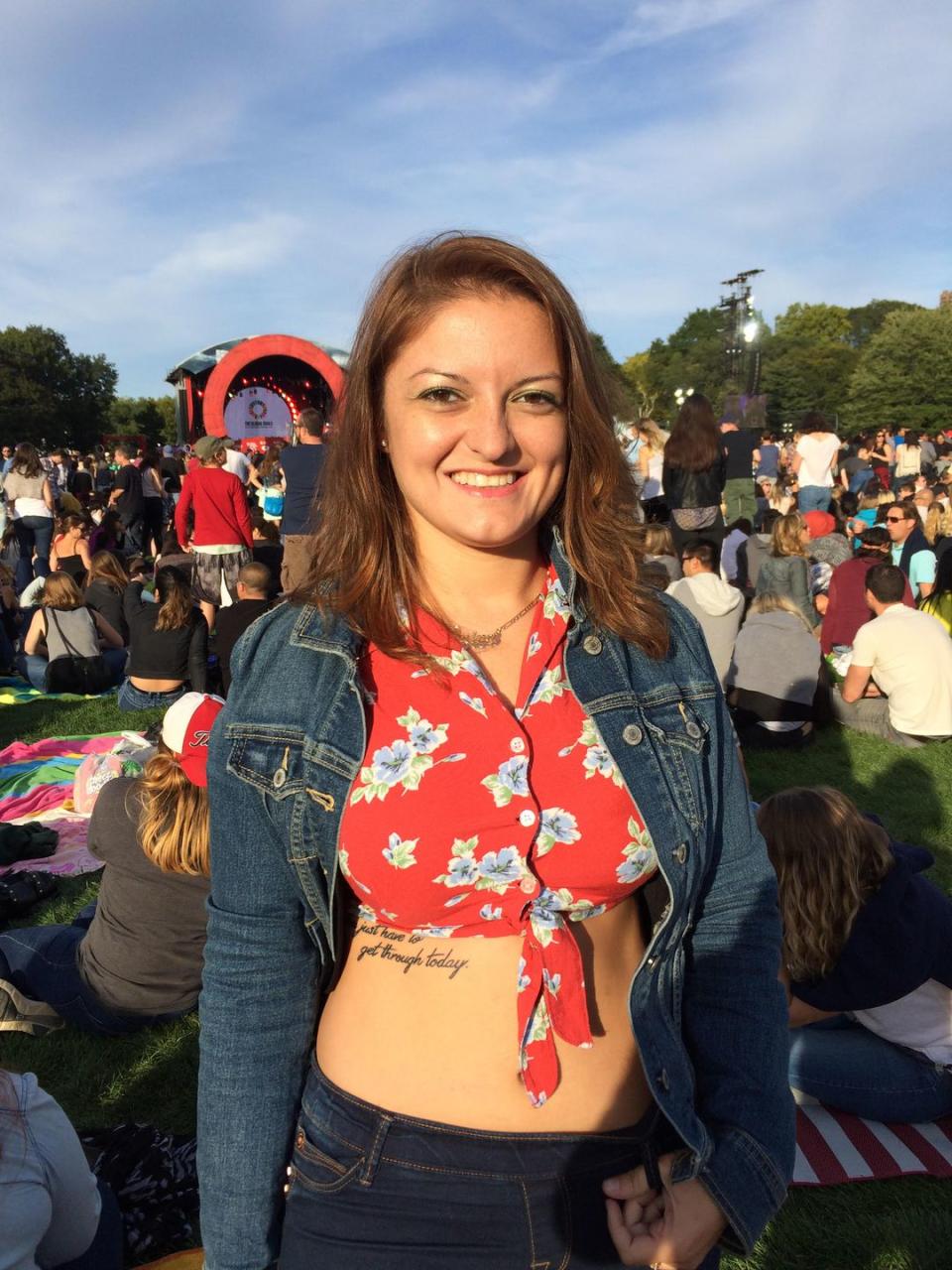How My Gray Area Drinking Problem Became Full-Blown Alcoholism

Three years ago, I woke up from being blacked out with a massive hangover and mini bottles of liquor all over my nightstand. Looking around the room, I quickly realized where I was: The hotel room I was staying in during a conference for my new job. But-to be honest-I wasn’t sure how I had actually gotten there.
After quickly losing that job, I had to admit what had just happened. I had relapsed into alcoholism just a couple of weeks after turning 30 and landing my highest-paying job.
A cocktail here, a glass of wine there-the drinks added up
Rewind five years before, things seemed to be going really well for me. My career was on its way up and, although my love life wasn’t so hot, I was excited about where I was going. Like many 25-year-old New Yorkers, I spent many evenings a week “going out” with friends and not thinking anything of it. I went out dancing and drank. I went to brunch and drank. I attended networking events and drank. I went on dates and drank. I hosted parties or had friends over for dinner-and drank. Every party, gathering, or event I was invited to involved drinking.
Was this normal?

But I wasn't the only one drinking this way; all of my friends were drinking like this. At the time, it seemed "normal." It felt as if these habits were all part of being a social, fun, young adult living in a big city, so I kept it up for many years. I would ignore the fact that I was always the one to finish the bottle of wine when my friends came over my apartment. I would pretend that having the occasional blackout night, where I didn't remember the cab ride home or where I had left my keys the night before wasn't a big deal. After all, stories like this from friends weren't that unusual either.
What is "gray area drinking," anway?
What I didn’t know at the time was that, for years, I was on the edge of gray area drinking. Jolene Park, a functional nutritionist, health coach, TEDxspeaker, and former gray area drinker, defines gray area drinking as the space between the extremes of rock-bottom drinking and every-now-and-again drinking. Externally, there often aren’t blatant signs or consequences from our drinking,” Park says. “Gray area drinkers often say 'I function really well. I just drink more than I should.' And friends and family members often tell gray area drinkers, 'You’re not that bad. It’s not like you have a problem or anything,'" Park explains. "Most gray area drinkers drink like most people around them, but that doesn’t mean it’s healthy, alcohol consumption.”
Unbeknownst to myself at the time, I was definitely in that middle area-teetering on the edge of gray drinking. But a couple of years later, I was doing all of the things that Park describes as common characteristics of gray area drinking, including silently questioning, worrying, and beating myself up when I thought that I drank too much.
How my gray area drinking problem turned into alcoholism
My gray area drinking problem became progressively worse as time went on. I developed a stronger tolerance for alcohol, and thus needed to drink more alcohol to feel a buzz or get full-on drunk. My drinking problem also started to affect my personal life. As my career took off, so did my stress levels-and I started to drink at home, alone, and most nights of the week, to relieve stress.
Again, everyone drinks to blow off steam, so it's not a problem that I was doing it, right? But deep down, I knew something was wrong, and what I was doing wasn’t actually normal or healthy. “If you’re questioning and thinking about your drinking, you’re on the gray area drinking spectrum,” Park says. “It doesn’t take a large quantity of alcohol to be a problem drinker, and more and more people are beginning to understand this.”
It wasn’t long before my gray area drinking became full-fledged alcoholism. At 28, I started working my dream job and was on the heels of another relationship crumbling. Unfortunately, the pressure I put on myself to succeed led to drinking daily bottles of wine at home after work. Eventually, things spiraled out of control, and I would drink so much that I would black out for large chunks of the weekend. A year later, I ended up in rehab after losing that dream job.
Dealing with alcoholism is a lifelong battle
Nine months after rehab, I thought I was doing fine, but I had fooled myself into believing that I could moderate my alcohol consumption, as many gray area drinkers tend to do. And a good night, when I had just one glass of wine, led to a bad night, when I emptied out a hotel's minibar and subsequently lost my job.
What I wish I had known years before my stint in rehab and relapse is just how easily people justify gray area drinking. “We are normalizing excessive, binge drinking,” Park says. According to the Centers for Disease Control and Prevention (CDC), binge drinking is defined as consuming four or more alcoholic beverages per occasion for women, or five or more drinks per occasion for men.
Thankfully, gray area drinkers have many resources to support them through rehab and recovery-from Park’s own TEDx Talk series to various online communities that promote an alcohol-free lifestyle. You no longer have to be in Alcoholics Anonymous (AA) to address your drinking habits.
Connecting with a community has been crucial to my own recovery, too. After my last relapse, I moved to a calmer city, started going to therapy, met my now-husband (who gave up drinking for me), and built a strong network of sober and non-sober friends who support my sobriety.
These days, I consider myself pretty lucky that my gray area drinking spiraled into alcoholism so quickly. To be honest, I don’t know what would have happened-or how long I might have suffered, thinking that all of my drinking was "normal" just because I saw my peers engaging in similar behavior. Today, being sober is a choice that I make proudly because I not only understand the consequences of alcohol on my own life but also its impact on our society as a whole, which is why I’m so happy to see a greater awareness of gray area drinking.
Finding support and community
If you or someone you know has a gray area drinking problem, Park recommends connecting with others who identify similarly. “There are many online communities, Instagram accounts, books, blogs, and meet-up groups, where you can find others with similar gray area drinking experiences and stories,” she says. “Knowing that you’re not a minority and actually part of the majority with your gray area drinking is key.”
Park also advises that people “start to add healthy things into your life that are relaxing and fun” in order to curb your gray area drinking, which is why I now prioritize self-care in the form of regular exercise, face masks, cooking healthy meals, going outside daily with my dog, and journaling my anxiety away.
As Park put it: “Alcohol isn’t going away, but the paradigm and stigma is quickly changing. Choosing to be alcohol-free is a movement that’s here to stay, and it’s counteracting the gray area drinking culture that has been rampant among us.”
To learn more about about gray area drinking and find support and resources for alcoholism, visit Recovery.org and Alcohol.org.
Stay updated on the latest science-backed health, fitness, and nutrition news by signing up for the Prevention.com newsletter here.
('You Might Also Like',)

